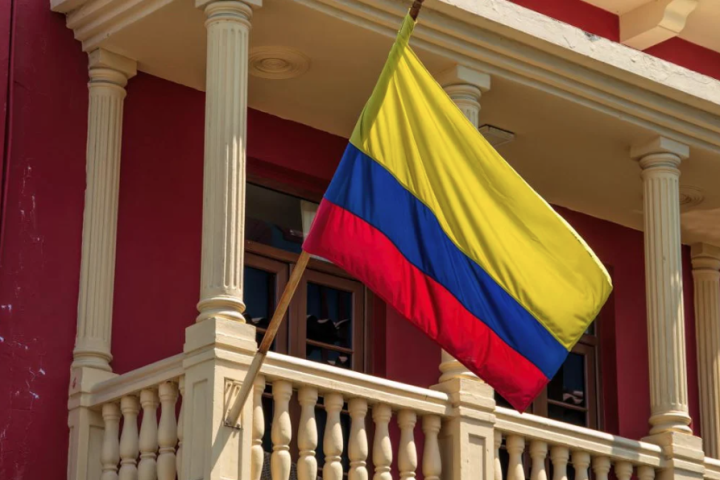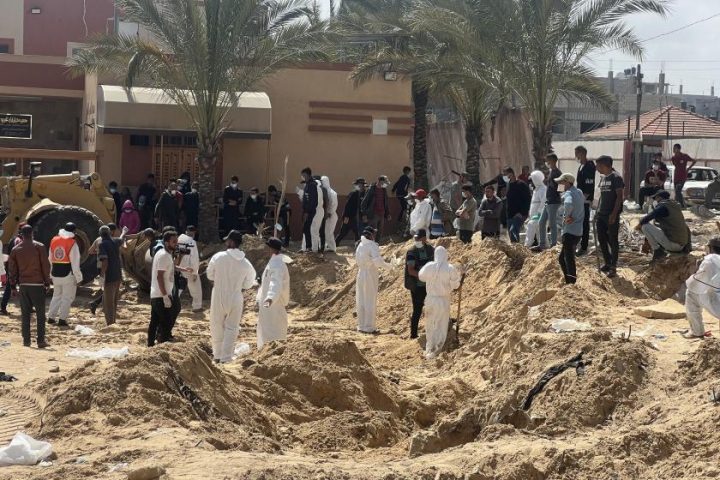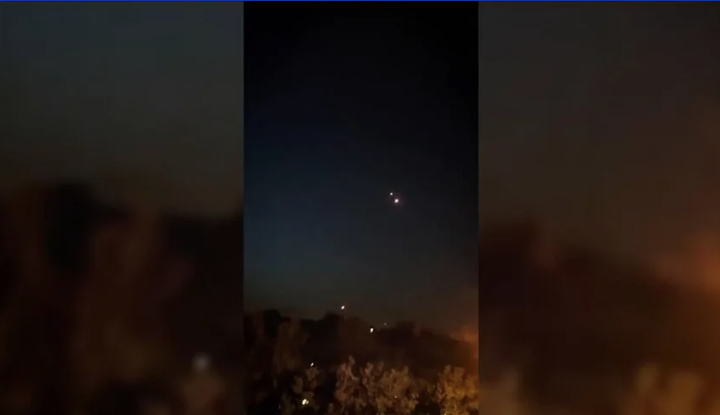Israel’s political borders are still one of the most debated issues in the world. This is because Israel’s official borders have not been fully declared since its establishment in 1948.
The British entry into Jerusalem on December 11, 1917 marked not only the end of four centuries of Ottoman rule in Palestine and the beginning of the British mandate, but also a decisive moment when Jews from all over the world became convinced that the promise made to them by then British Foreign Secretary Arthur Balfour to create a Jewish state in the land of Palestine would come true, and thus change the world map, demographics, narratives and history.
From that moment on, the map of the world began to change as settlements were built for Jews in strategic locations in the form of ghettos, concentrated in areas where Jews had not previously lived, and covering the largest geographical area possible. Between 1939 and 1948, 79 settlements were built for Jews in Jerusalem, Beersheba, Northern Najaf (Negev) and Gaza, covering more than two billion square meters.

Israel’s political borders are still one of the most debated issues in the world. This is because Israel’s official borders have not been fully declared since its establishment in 1948.
Decision to partition Palestine
By 1918, the Jews owned 240 million square meters of land. This was only 1.56 percent of the Palestinian territory at the time. However, with the partition of Palestine adopted by the United Nations (UN) General Assembly in 1947, which called for the end of the British Mandate for Palestine and the partition of the region between two states, Jews, who at the time made up only one-third of the population and owned only seven percent of the land, were granted more than 56 percent of the historic Palestinian territory, or more than 27,000 square kilometers.
The area designated for the Jews was 14.1,000 square kilometers, covering the coastal plain from Haifa to south of Tel Aviv and the eastern Galilee, including Lake Tiberias, the Finger of Galilee and the Najaf Desert, and was inhabited by a population of 498,000 Jews and 497,000 Arabs.
The Palestinians, on the other hand, were given 11.1,000 square kilometers, only 43 percent of the Palestinian territories, including the desert area adjacent to Egypt, as well as the West Bank, the Western Galilee, Acre and the southern coast from the city of Ashdod north to Rafah in the south. The resolution envisaged Jerusalem and Bethlehem becoming cities administered by an international body led by the UN, while the total area of the two cities and their rural areas, inhabited by 205,000 people, including 100,000 Jews, was 117 square kilometers.
Preventing infiltration
Shortly after the Arabs and Palestinians announced their rejection of the partition of Palestine, they formed the ‘Liberation Army’ to expel the Jews from the land of Palestine. The Jewish leadership declared the creation of the State of Israel on May 14, 1948, on the eve of the end of the British Mandate for Palestine. Jewish organizations such as the Haganah, Palmah, Irgun and Stern (Lehi) carried out massacres against Palestinians, displacing them and confiscating their land, homes and property. An alliance of the armies of four Arab countries – Egypt, Syria, Iraq and Jordan – entered what became known as the ‘War of the Liberation of Palestine’ against Israel. The war ended with Israel’s annexation of Najaf, Galilee and the entire northern part of the Palestinian territories, while Israel gained large areas of coastal Palestine, with the exception of Gaza, which fell under Egyptian control.
According to a joint report by the Centre on Housing Rights and Evictions (CHORE) and the Resource Center for Palestinian Residency and Refugee Rights (RCCPR), Israel controlled approximately 20,000 square kilometers of Palestinian territory in 1949, 90 percent of which was individually or collectively owned by Palestinians.
According to the same report, Israel has also prevented internally displaced Palestinians from returning to the towns, villages and properties from which they were expelled as a punishment if they are ‘found to have acted without authorization’, as stated in the 1954 ‘anti-infiltration’ law.
When Israel invaded Jerusalem in 1948, ignoring the plan to partition Palestine, and took control of 84 percent of the city, some 20,000 Muslims and Christians living in West Jerusalem were expelled and displaced from their homes, never to return. The remaining 4.5 percent of Jerusalem’s 1948 borders was declared a ‘neutral zone’, a buffer zone.
The biggest change
On June 5, 1967, nearly twenty years after Israel’s creation, Israel won the war between Israel and Egypt, Syria and Jordan, which lasted only six days. As a result of this war, Israel captured East Jerusalem and the West Bank, as well as most of the Syrian Golan Heights, the Gaza Strip and Egypt’s Sinai Peninsula. Thus, Israel has achieved significant military, political and economic results by capturing 69,347 square kilometers of Arab lands, more than three times the territory it took in the 1948 war. On the Jordanian front, Israel took control of the entire West Bank, including East Jerusalem, imposed its influence on an area of 5,878 square kilometers and reduced its 650-kilometer border with Jordan to 480 kilometers.
On the Syrian front, Israel captured 1,158 square kilometers of the Golan Heights, which has a total area of 1,860 square kilometers. As a result, approximately 100,000 people from the Golan Heights had to leave their homes and flee to Syria. On the Egyptian front, its capture of the Sinai Peninsula and control over 61,948 square kilometers allowed it to improve its strategic position and military maneuverability, especially since the Golan Heights, the Jordan River and the Suez Canal form natural geographical obstacles.
Despite Israel’s withdrawal from the Sinai Peninsula in 1979 as part of a peace agreement with Egypt and the signing of the Wadi Arabe Peace Agreement with Jordan in 1994, and the demarcation of borders with both countries, the control of East Jerusalem and the annexation of West Jerusalem in 1967 was the biggest event since the beginning of the Palestinian-Israeli conflict and an unprecedented historical and religious event for Israelis.

According to the Palestinian Foreign Ministry website, after the 1967 Six-Day War, Israel confiscated approximately 34 percent of East Jerusalem’s land ‘for use as public space’. Israel annexed 1.3 percent of the land under the jurisdiction of the Jerusalem Municipality, while 53 percent of the land in East Jerusalem was either allocated to Jewish settlements or designated as ‘green space’.
While Palestinians were unable to live and build on 13 percent of their land east of Jerusalem, the Israeli government’s powers were expanded to include East Jerusalem in the 1980 Basic Law. This annexation violated the international resolution on the forcible seizure of territory, and was declared ‘not legally valid’ by the UN Security Council (UNSC).
Geographical facts
Despite its unilateral withdrawal from the Gaza Strip in 2005, Israel maintains an air, sea and land blockade of Gaza, while still controlling Syria’s Golan Heights and the West Bank, including East Jerusalem, according to international law. Studies show that Israel’s settlement activity in the West Bank since 1967 has resulted in the confiscation of more than 40 percent of the West Bank’s 5,760 square kilometers, and the construction of settlements and 980 kilometers of perimeter roads to connect them.
The number of Israeli settlements and military bases in the West Bank has now reached approximately 471. Of these, 151 are settlements, 26 are outposts and neighborhoods attached to these settlements, 150 are pastoral and agricultural outposts, and 140 are infrastructure facilities classified as industrial, tourism, service areas and barracks.
Israel has also built an annexation and expansion wall that isolates more than 12 percent of the West Bank from the rest of the territory, while confiscating 18 percent of the West Bank to build military barracks and military training areas. Since 1967, Israeli authorities have confiscated some 353 million square meters of Palestinian land, which they have classified as ‘nature reserves’.
Despite the involvement of the Palestine Liberation Organization (PLO) in the peace process with Israel in 1993 and the establishment of the Palestinian Authority (PA) to administer parts of the Palestinian territories as part of the Oslo Peace Accords, Israel continues to expand its control, as confirmed by the Colonization & Wall Resistance Commission (CWRC) a few days ago. Israel has confiscated some 27 million square meters of land in the West Bank and has a plan on the table to build 52 settlements there. Since the start of the war in Gaza on October 7, 2023, Israel has forced 25 Palestinian communities to flee the territory. According to official PA data, the total area of the Palestinian territories under Israeli de facto measures is 2,380 square kilometers, 42 percent of the total area of the West Bank and 69 percent of the total area classified as C, subject to Israeli military administration.
Experts and observers of Palestinian affairs believe that there is no real prospect for the establishment of an ‘independent Palestinian state’ under even the most minimal conditions, especially since Israel has taken control of most of the West Bank, increased the number of settlements in areas where it imposes military control classified as C, and partially controls urban centers where the Palestinian Authority is unable to provide security on its own, in addition to the lack of hope for a political solution between the Palestinians and Israelis and Israel’s continued seizure of more land without any restrictions or limitations.
This article was translated by Sharq al-Awsat from Independent Arabia.





